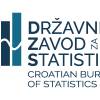
The covid-19 vaccine offers perspectives for ending the pandemic. Although many people hope to go back to the ‘old-normal’, the most forward looking leaders see opportunities to reinventing organization’s identity, how we work and how to grow to a ‘New Normal’.
(See also my December column at: https://www.poslovni-savjetnik.com/aktualno/john-lodder-leading-after-pandemic-means-creating-new-normal)
How do Leaders view their organization, how do they create meaning?
Do they see their organization as a well-oiled machine with clear structures and roles, command and control, certainty, agreements etc.? This requires linear thinking.
Or do they see their organization as a complex adaptive eco-system with distributed networks of teams with informal influencers, dealing with surprises, uncertainties disagreements, paradoxes, stimulating creativity etc.? This requires complexity thinking. Their view influences HOW they structure and lead their organization.
The pressure to change has been building for years, even before the COVID-19 pandemic. Boards and senior executives worried their organizations were too slow, too siloed and too bureaucratic. What many leaders feared, and what the pandemic confirms, is that their companies were organized for a world that is disappearing, an era of standardization and predictability is overtaken by four big trends, a combination of:
- heightened connectivity
- lower transaction costs
- unprecedented automation
- shifting demographics
Leaders see clear changes in competition, digital start-ups that continued to innovate and win in bold new ways.
While no organization has yet invented a new wheel, the ongoing experiments suggest that future-ready companies share three characteristics to improve their odds of thriving in the New Normal:
- they know who they are and what they stand for
- they operate with a fixation on speed and simplicity
- they grow by scaling up their ability to learn, innovate and constantly seek good ideas.
Top performers everywhere are recognizing that the pandemic offers a once-in-a-generation opportunity for change and exchange about what a better organization could look like.
The inevitable transition from today’s COVID-19 crisis mode to the Next Normal offers senior executives a unique unfreezing opportunity. By seizing the initiative, companies can discover organizational “unlocks” and create new systems that are more flexible, more organic, more interconnected, more purposeful and especially more human, both in leadership style, in cooperation and teamwork.
Reinvention is a necessity
Today’s organizations are set up as traditional hierarchies or matrix organizations with roots stretching back to the industrial revolutions of the 18th, 19th, and 20th centuries. These structures provided clear lines of authority from frontline employees up through layers of management. In reality, matrix structures have only grown more complex as business and markets have, to the extent that many companies now are so complicated they hardly function.
We cannot expect these old models to be fit in today’s new and disruptive environment. They are mechanistic by design, built to solve for uniformity, bureaucracy and control; goals that undercut what companies now prioritize: creativity, speed, inclusion and accountability and, not offering what today’s employees need.
The answer is, clearly, not to modify the old models but to replace them with something radically better, including Leadership.
Looking for (future) leadership
Globally, 61% of people trust companies in general but that trust is based on great expectations!
86% of people said they expect from their leaders to speak out openly on issues, including e.g. COVID-19, job automation, societal issues and local community issues, future changes etc. In short leaders must be clear, honest and authentic. Potentially this is what women are structurally better at as men.
All you need is the compassion of the heart. Women know this because peace is implicit in women.
You put boys together, they make war. You put women together, they make peace.
Women are the leaders of the future!” (Dalai Lama, 2019)
8 Examples of true leadership in a crisis
From Iceland to Taiwan and from Germany to New Zealand, women were stepping up to show the world how to manage a messy patch for our human family. Add Finland, Iceland, Denmark and Hong Kong, and this pandemic is revealing that women have what it takes when the heat rises in our Houses of State. What did these Female Leaders teach us?
- Truth
Angela Merkel, Germany, stood up early and calmly told her citizens that this was a serious bug that would infect up to 70% of the population. “It’s serious,” she said, “take it seriously.” She did, so they did too.
- Decisiveness
The first and fastest responder was Tsai Ing-wen in Taiwan. In January 2020, at the first sign of a new illness, she introduced 124 measures to block the spread, by this she did not have to decide for a lockdown, which came common elsewhere. Carrie Lam of Hong Kong was the second to respond immediately in a similar way.
Jacinda Ardern, New Zealand, was early to lockdown and crystal clear on the maximum level of alert she was putting the country under and why. She imposed self-isolation on people entering New Zealand and banned foreigners from entering entirely. Clarity and decisiveness saved New Zealand from worse.
- Tech
Katrín Jakobsdóttir of Iceland, offered free coronavirus testing to all its citizens and made a key case study in the true spread and fatality rates of COVID-19.
Sanna Marin became the world’s youngest head of state when she was elected December 2019 in Finland. She used social media influencers as key agents in battling the coronavirus crisis. As not everyone reads the press, influencers of any age were to spread fact-based information helping to manage the pandemic.
- Love
Norway’s Erna Solberg had the innovative idea of using television to talk directly to her country’s children. She was building on the short, three-minute press conference that Danish Prime Minister Mette Frederiksen had held a couple of days earlier.
Solberg held a dedicated press conference for children only. She responded to kids’ questions from across the country, taking time to explain e.g. why it was OK to feel scared..
- Conclusion
How many other simple, humane innovations could more female leadership unleash?
The empathy and care which all of these female leaders have communicated in times of crisis seems to come from an alternate universe than the one we got used to from most male leaders. It is like their arms are coming out of their videos to hold you close in a heart-felt and loving embrace. Did we know leaders could sound like this? Anyway, now we do!
Compare these female leaders and stories with the ‘strongmen’ using the crisis to accelerate a terrifying authoritarianism: blaming others, capturing the judiciary, demonizing journalists, and blanket their country in darkness.
Think of leaders like Trump, Bolsonaro, López Obrador, Modi, Duterte, Orban, Putin, Netanyahu…..
A look at women in Leadership Roles (4 March 2020, Dorothy Neufield)
As more women are in the workforce compared to previous generations, they are underrepresented in leadership roles.
|
S&P 500 Companies: Leadership Roles |
Women's Representation in Leadership Roles |
|
CEOs |
5.80% |
|
Top Earners |
11.00% |
|
Board Seats |
21.20% |
|
Executive/Senior-Level Officials and Managers |
26.50% |
|
First/Mid-Level Officials and Managers |
36.90% |
|
Total Employees |
44.70% |
Women belong in all places where decisions are being made… It shouldn’t be that women are the exception.
Ruth Bader Ginsburg, U.S. Supreme Court Justice.
Years of research suggest that women’s leadership styles might be different and more beneficial
Although the majority of people at the top of organizations are men, studies show that actually women have what it takes to lead effectively.
Instead, too many political organizations and companies are still working to push women to behave more like men if they want to lead or succeed. Rather than advising female executives to act more like men, political organizations, companies and society would be better served by more male leaders trying to emulate women.
There are - at least - seven big lessons male leaders can learn from the opposite sex:
- Do not lean in without the talent to back it up
There is a trend of telling women to “lean in” to qualities like assertiveness, boldness or confidence.
In men such qualities can manifest as self-promotion, taking credit for achievements of others and acting in aggressive ways. Since there has never been a strong correlation between leaning in and being good at something, especially for men, a better option would be to stop falling for people who lean in when they lack the talents to back it up.
In a logical world we would promote people into leadership roles when they are competent rather than confident, testing them for their expertise, track record and relevant leadership competencies (e.g. emotional intelligence, curiosity, empathy, integrity, and coachability).
- Know your own limitations:
We live in a world that celebrates self-belief, but, it is far more important to have self-awareness. Often there is a conflict between the two.
For instance: awareness of your limitations, flaws and weaknesses is incompatible with skyrocketing levels of self-belief, and the only reason to clearly miss self-doubt and insecurities is delusion. Although women are not as insecure as they are portrayed in the popular media, studies show that they are generally less overconfident than men. This is good news because it enables them to understand how people see them and it gives them the capacity to spot gaps between where they want to be and where they actually are. People who see themselves in a more critical way are better able to prepare and that is a solid way to increase competence and performance.
- Motivate through transformation
Studies show that women more than men are more likely to lead through inspiration, transforming people’s attitudes and beliefs, and aligning people with meaning and purpose (rather than through carrots and sticks). Since transformational leadership is linked to higher levels of team engagement, performance and productivity, it is a critical path for improving leaders’ performance.
Would men spent more time trying to win people’s hearts and souls, leading with both EQ and IQ, as opposed to leaning more on the latter, and nurturing a change in beliefs rather than behaviours, they would be better leaders.
- Put your people ahead of yourself
It is very hard to turn a group of people into a high-performing team when your main focus is yourself.
People who see leadership as a glorified career destination and individual accomplishment are too self-centred to foster their teams’ wellbeing and unlock their subordinates’ potential.
Imagine a person who is only interested in being a leader because they are chasing a bigger pay check, a more senior title, or any form of status. Clearly they will be inherently less interested in making others better, their only goal is to be more successful themselves. Because men are generally more self-focused than women, they are more likely to lead in a narcissistic and selfish way. If the average male leader wants to improve his performance, he would do well to adopt a less self-centred style of leadership.
- Do not command but empathize
Throughout history women are told they are too kind and caring to be leaders, but the notion that someone who is not kind and caring can lead effectively is at odds with reality. We are not living in medieval times.
Twenty-first century leadership demands that leaders establish an emotional connection with their followers, and that is arguably the only reason to expect leaders to avoid automation. Indeed, while AI will hijack the technical and hard-skill elements of leadership, so long as we have humans at work, they will crave the validation, appreciation and empathy that only humans, not machines, can provide. Men can learn a lot about how to do this effectively by watching and emulating women.
- Focus on elevating others
Female leaders have been proven to be more likely to coach, mentor, and develop their employees than male leaders. They are true talent agents, using feedback and direction to help people grow. This means being less transactional and more strategic in their relationship with employees and it also includes the openness to hire people who are better than themselves, because their egos are less likely to stand in the way.
This enables them to unlock other people’s potential and promote effective cooperation in their teams. While we gravitate towards leaders who are self-focused and self-centred, the likelihood that such individuals can turn a group of people into a high-performing team is low.
- Be humble and authentic.
We have been asking for humble leaders for 20 years or so, but we keep gravitating toward ones who are overconfident and narcissistic. There are well-established gender differences in humility and they favour women. Not all women are humble, of course, but selecting leaders on humility would result in more female than male leaders. Humility is fundamentally a feminine trait. It is also one that is essential to being a great leader.
Without humility it will be very hard for anyone in charge to acknowledge their mistakes, learn from experience, take into account other people’s perspectives, and be willing to change and get better. Perhaps the issue is not that men are unwilling or unable to display it, but that we dismiss them for leadership roles when they do.
This must change, for humility is a critical driver of leadership effectiveness in both men and women.
Women are better leaders than men: Women are far less sensitive for narcissism !˝
Prof. Dr. Manfred Kets de Vries (INSEAD)
Harvard Business Review (HBR) research 2020 in summary
According to an analysis of 360-degree assessments conducted between March and June 2020, women were rated by those who work with them as more effective than men.
The gap between men and women in the pandemic is even larger than previously measured, indicating that women tend to perform better in a crisis. In fact, women were rated more positively on 13 of the 19 competencies that comprise overall leadership effectiveness in this assessment.
When discussing the careers of women leaders, there is a phenomenon referred to as the “glass cliff.”
It is an obvious relative to the term glass ceiling, which describes the invisible barrier to advancement that women often face when they are up for promotion to the highest levels of an organization. The “glass cliff” describes the idea that when a company is in trouble, a female leader is put in charge to save it.
When women are finally given a chance to prove themselves in a senior position, they are handed something that is already broken and where the chances of failure are high.
We see this happen frequently enough that we wondered: are women in fact more qualified to lead during a crisis? Could that be why they are handed the lead when times are tough?
During the Covid-19 crisis, we have heard anecdotally about women leaders doing a better job and new research backs that up. One study found that outcomes related to Covid-19, including number of cases and deaths was systematically better in countries led by women. Another looked at governors in the U.S. and similarly found that states with female leaders had lower fatality rates. We decided to look at our global database of 360-degree assessments to see if we saw any patterns in how male and female leaders inside organizations are reacting and responding to the crisis.
Who is Seen as More Qualified to Lead in a Crisis?
The data for our analysis was pulled from assessments of over 60,000 leaders (22,603 women and 40,187 men). We wanted to look at similar data gathered during the first phase of the Covid-19 crisis to see if these ratings had changed.
Between March and June of 2020, 454 men and 366 women were assessed on their leadership effectiveness using our Extraordinary Leader 360-degree Assessment. Consistent with our pre-pandemic analysis, we found that women were rated significantly more positively than men. Comparing the overall leadership effectiveness ratings of men versus women, once again women were rated as more effective leaders (t-Value 2.926, Sig. 0.004). The gap between men and women in the pandemic is even larger than previously measured, indicating that women tend to perform better in a crisis.
Women were rated more positively on 13 of the 19 competencies in our assessment that comprise overall leadership effectiveness. Men were rated more positively on one competency, technical/professional expertise, but the difference was not statistically significant. In the table below, percentile scores for men and women are displayed sorted by the average rating for women.
Why Are Women Leaders Seen as More Effective?
Each leader we assessed also received an employee engagement score based on their direct report’s responses to questions about how satisfied and committed they felt. The engagement level of those working for male leaders was slightly below average, but the engagement scores for the direct reports of female leaders were significantly higher. The overall average for both male and female leaders was the 51st percentile.
To better understand what was driving the difference in engagement levels, we looked at the competencies that direct reports ranked as most important during the crisis. Notably, respondents put greater importance on interpersonal skills, such as “inspires and motivates”, “communicates powerfully”, “collaboration/teamwork”, and “relationship building” all of which women were rated higher on.
Our analysis echoes what the researchers found in the study mentioned above about U.S. governors: female leaders expressed more awareness of fears that followers might be feeling, concern for wellbeing, and confidence in their plans.
Perhaps the most valuable part of these HBR data is hearing from thousands of employees what they value and need from leaders during a crisis, a Leader:
- should be able to pivot and learn new skills
- emphasize employee development even when times are tough
- display honesty and integrity and
- be sensitive and understanding of the stress, anxiety, and frustration that people are feeling.
Conclusion
This analysis shows that these traits are more often being displayed by women. But, all leaders, regardless of gender, should strive to meet these competences.
The best gender equality intervention is to focus on equality of talent and potential and that only happens when we have gender-equal leadership, to enable men to learn different leadership approaches from women as much as women have always been told to learn leadership approaches from men.
To reinvent organizations and to implement the actions necessary to achieve the ‘New Normal’ successfully: organizations need Female Leadership.
If you are interested in a deeper dive into this topic, a colleague of mine offers a free webinar on 10 March 2021, more information you find by following this link:
(For this column I was inspired by a.o. Avivah Wittenberg-Cox, Tomas Chamorro-Premuzic and Cindy Gallop, Dr. Claudia Gross, The McKinsey Report: Women in the Workplace 2020, Jack Zenger and Joseph Folkman (HBR), Aaron De Smet, Chris Gagnon and Elizabeth Mygatt (McKinsey)
























